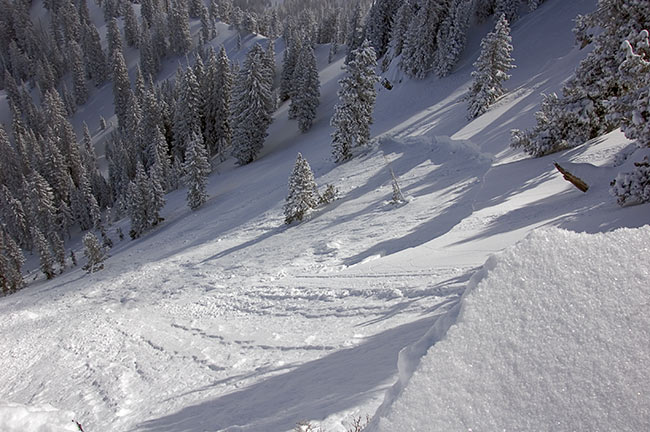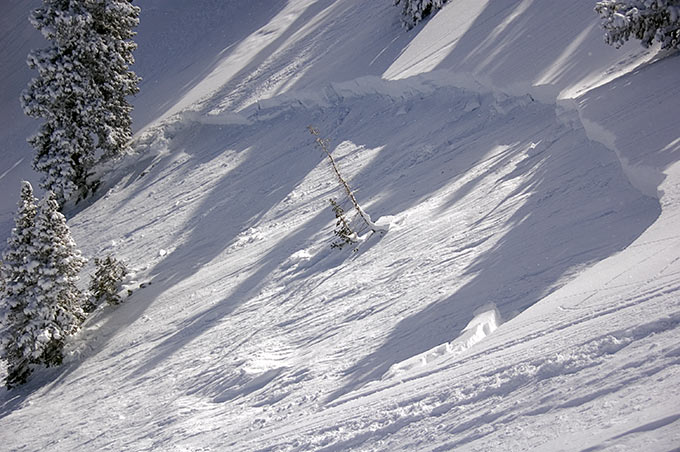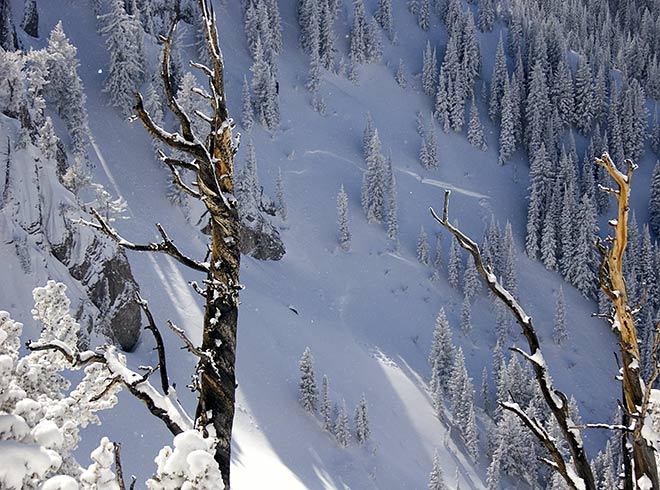February 24
Area:
Porter to West Porter to Neffs
Elevations, slope angles and aspects:
5200’-9700’, angles to 35°, north, east and west.
Avalanche activity:
West Porter

Elevation: 9300'
Aspect: northeast facing
Slope angle: over 35°
Depth: 30"+ in places, running on the upper well developed facet layer.
Width: 80'+
Length of path: 500’ vertical

A section of cornice about 50' long broke off while traversing on the ridge above. Rolled down triggering the slide.
Other slides at the end of the storm were observed. There is a weak layer (facet?) under the recent wind crust. The slides are collapsing that crust removing it with avalanche.

We experienced collapsing on that layering from time to time with occasional shooting cracks.
Another slide on the well-developed facets was also observed at about 8500' north facing.
Bonkers slid out during the storm.
Slopes skied:
West-northwest upper Neffs, northwest facing off the shoulder of the north slide path and out.
Snow surface and conditions:
There was 6” or so at the Porter trailhead. That increased to 12-14” in upper Neffs. There was some settlement overnight making the snow a bit denser than found yesterday. A widespread crust is under most of the new snow, It ranges from an eggshell to over an inch thick. In some areas there is a light density possibly faceted snow layer under the crust which is collapsing. Several natural avalanches were observed, running at the end of the storm from overloading of the crust-light density interface. Snow at lower elevations got warm enough by afternoon to begin the melt off and will probably have a surface crust tomorrow.
Weather:
Bluebird in the morning with increasing clouds during the day.
Snow pits:
Several done on north and northeast aspects above 9000’. Didn’t have time for a profile. The interface of new snow and crust described above was producing easy Q1 shears. The older well developed faceted snow is now buried about 2’ deep in the area. Non reactive in the areas pits were done in.
Evaluation:
The new snow-crust interface was producing slides and we got collapsing on it. I would expect that to continue for a day or two. More slides were observed on that layering than on the old well developed-depth hoar layers. The slide which ran on the older layers, today, required a hell of a thump. I’d suspect little change from previous days, with a few more pockets possible from one trigger or another, including skiers.
© wowasatch.com